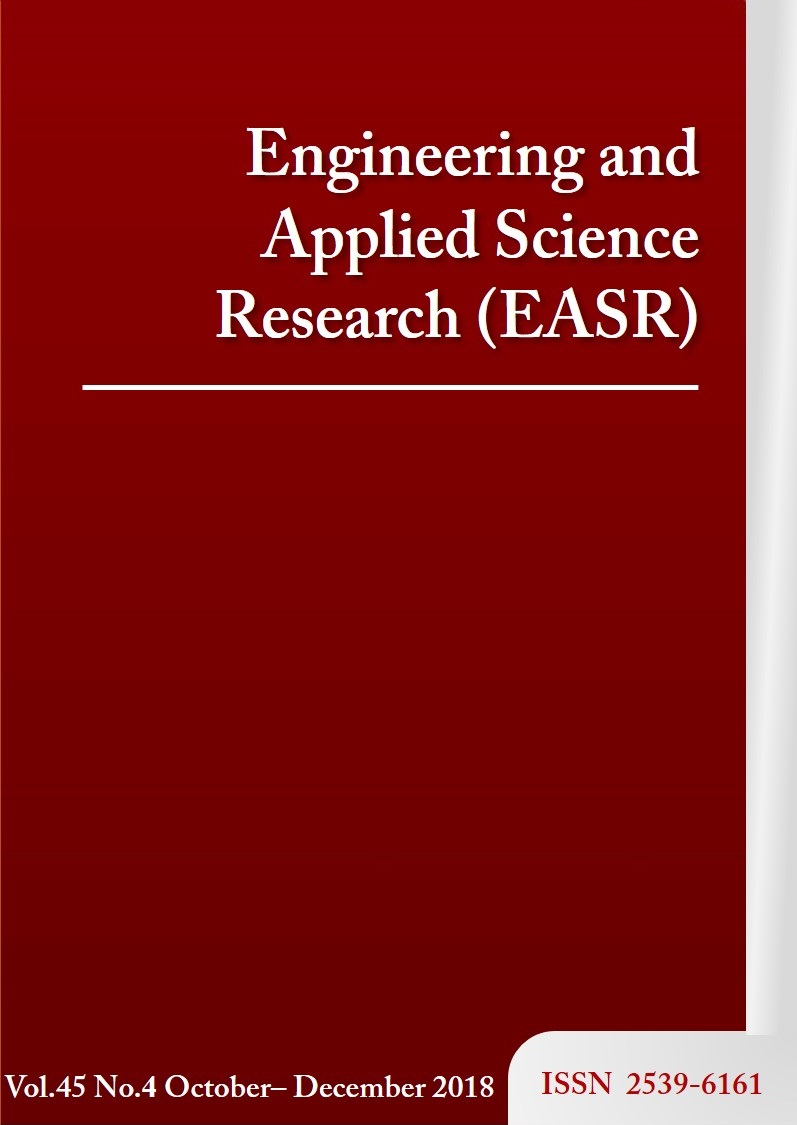Simulation-based approaches for processes improvement of a sugar mill yard management system: A case study of the sugar industry in the central region of Thailand
Main Article Content
Abstract
Inbound logistics in the sugarcane industry focus on the efficiency of sugarcane transportation to the sugar mill under mill capacity constraints. At present, the issue of the long waiting time for vehicles at the mill yard occurs because of the high uncertainty of vehicle arrival rate and the important factor is not an unloading machine allocation strategy. This research proposes a methodology to improve mill yard management that aims to reduce the time in the system for sugarcane transport vehicles. The current management system of the mill yard system was simulated using Arena software. To treat this as a waiting time problem, the current study focuses on the average vehicle time in the system, to lead to further improvements by developing alternative configurations. Two alternative scenarios were proposed as (1) the proposed model 1: developing a registration process based on a grower type priority serving all grower types on a first come first served (FCFS) basis and (2) the proposed model 2: allocating unloading machines depending on the type of sugarcane grower. The results show that with the current system, vehicles spend 10.18 hours in the system. Proposed model 1 shows that they will spend 9.31 hours in the system while proposed model 2 predicts that they will spend 9.02 hours in the system. Thus, improvements reflected in reduced time in the system show reductions of 0.87 hours (52.2 minutes, 8.55%) and 1.16 hours (69.6 minutes, 11.39%), respectively.
Article Details
This work is licensed under a Creative Commons Attribution-NonCommercial-NoDerivatives 4.0 International License.
References
[2] Kachitvichyanukul V, Sethanan K, Golinska- Dawson P, editor. Toward Sustainable Operations of Supply Chain and Logistics Systems [Internet]. Berlin: Springer; 2015 [cited 2016 Sep 20]. Available from: https://link.springer.com/10.1007/978-3-319-19006-8
[3] Sethanan K, Chetchotsak D, Tongsokhowong A, Chaikanha N, Kusoncum C. Inbound logistics models for Thai Sugar Industry in preparation for the AEC framework. Proceedings of the APIEMS2012 Conference; 2012 Dec 2-5; Phuket, Thailand. p. 608-17.
[4] Ect N, Norris C, Connolly T. Harvesting Best Practice Manual [Internet]. Australia: Sugar Research Australia; 2014 [cited 2016 Sep 20]. Available from: https://www.sugarresearch.com.au/
[5] Tinnongwatthana T. Sugar cane harvest and transportation [Internet]. Office of the Cane and Sugar Board. Bangkok: Office of the Cane and Sugar Board; 2013 [cited 2016 Sep 2]. Available from: https://oldweb.ocsb.go.th/udon/All text/1.Article/01-Article P9.1.htm
[6] Kelton WD. Experimental Design for Simulation. Proceedings of the 2000 Winter Simulation Conference. 2000 Dec 10-13; Orlando, USA. USA: IEEE; 2000. p. 32-8.
[7] Maria A. Introduction to modelling and simulation. In: Andradottir S, Healy KJ, Withers DH, Nelson BL, editors. Proceedings of the 1997 winter simulation conference; 1997 Dec 7-10; Atlanta, USA. USA: IEEE; 1997. p. 7-13.
[8] Carson JS. Introduction to modeling and simulation. In:Kuhl ME, Steiger N, Armstrong F, Joines JA, editors. Proceedings of the 2005 Winter Simulation Conference; 2005 Dec 4; Orlando, USA. USA: IEEE; 2005. p. 9-16.
[9] Higgins A, Davies I. A simulation model for capacity planning in sugarcane transport. Comput Electron Agric. 2005;47(2):85-102.
[10] Giles RC, Bezuidenhout CN, Lyne PWL. A simulation study on cane transport system improvements in the sezela mill area. Proc S Afr Sug Technol Ass. 2005;79: 402-8.
[11] Arjona E, Bueno G, Salazar L. An activity simulation model for the analysis of the harvesting and transportation systems of a sugarcane plantation. Comput Electron Agric. 2001;32(3):247-64.
[12] Iannoni AP, Morabito R. A discrete simulation analysis of a logistics supply system. Transp Res Part E Logist Transp Rev. 2006;42(3):191-210.
[13] Bocanegra-Herrera CC, Vidal CJ. Development of a simulation model as a decision support system for sugarcane supply. DYNA. 2016;83(198):181-7.


